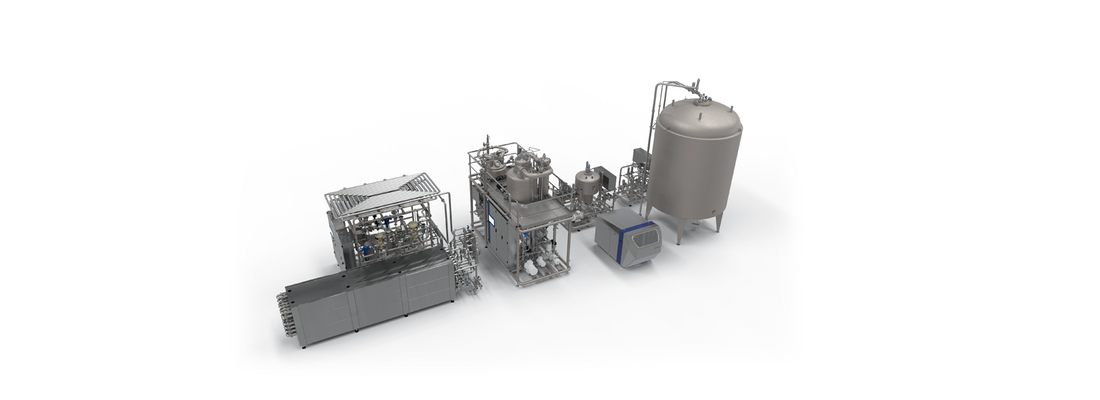In developing its energy-saving concept, Krones’ process technology team has revolutionized the heart of the VarioAsept D – that is, the direct-heating process itself. Taking a cue from high-gravity brewing, which has proven itself in the beer sector, Krones has introduced what it calls high-gravity heating, in which the product (oat drink or a dairy-based drink) is fed into the direct-heating system in a concentrated form. In other words, the water content of the beverage at this point is lower than that of the finished product.
The genius of heating a concentrated product in this way becomes apparent when we look at the cooling process. That’s because, in order to arrive at the desired finished product, a conventional direct-heating system will remove the same amount of steam that was injected or infused into the product during heating. Since the high-gravity approach involves adding water to a concentrated product in a later stage, Krones solves the problem by simply leaving a predefined amount of the steam in the product during cooling.
Advantages of the concept
Producers of highly sensitive beverages like milk-based drinks and plant-based milk alternatives benefit from the energy-saving concept at several points along their process. For instance, the finished product itself can be used as a heat source, so that no additional steam needs to be supplied to the heat exchanger. A higher target temperature following heat treatment means that less cooling output is demanded of the condenser. The temperature of the process water coming off the flash cooler can, in fact, be raised by up to 15 degrees Celsius, and the resulting surplus heat can be used in upstream processes such as mashing.








